The Best Home Security Systems in 2025 With No Monthly Fees
SimpliSafe blew us away with its affordable DIY equipment starting from $250.
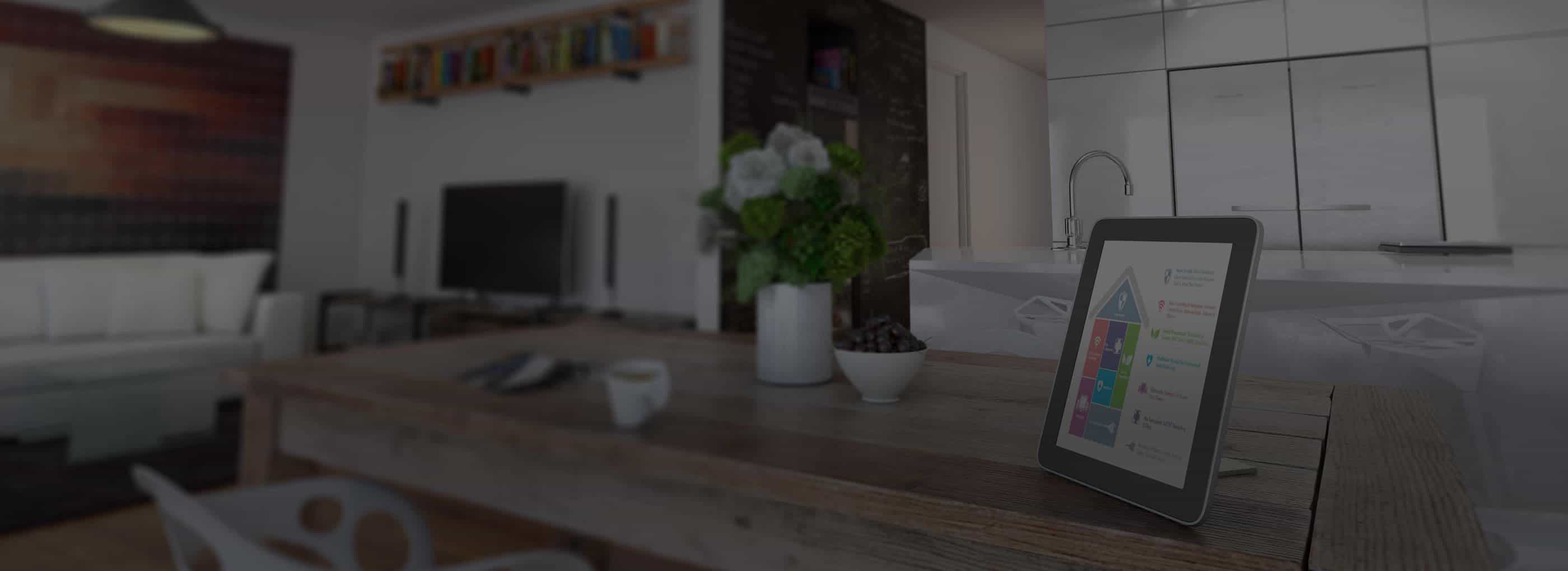
SafeHome.org may receive compensation from some providers listed on this page. Learn More
We may receive compensation from some providers listed on this page. Learn More
Most Flexible
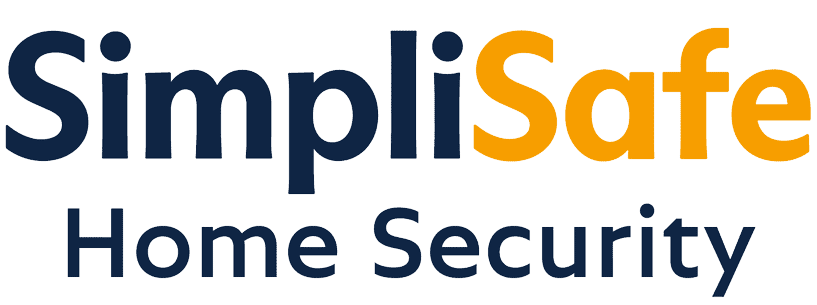
With SimpliSafe, there are no monthly fees, installation costs, or long-term contracts required. Buy your equipment upfront and self-monitor your system if you want with a 60-day money-back guarantee. Optional monitoring plans start at just $1 per month.
Best AppBest Equipment Range

ADT Self Setup makes it easy to manage your entire security system from the ADT+ app. You don’t need to pay a monthly fee to arm/disarm your system, respond to alerts, or watch the live feed from high-tech Nest Cam security cameras.

If you’re looking for smart home features without a subscription, abode is one of the few systems that offers integrations with all major smart home ecosystems in their free plan. Basic packages start at just $179, too, making it affordable upfront and in the long-run.
Most Flexible
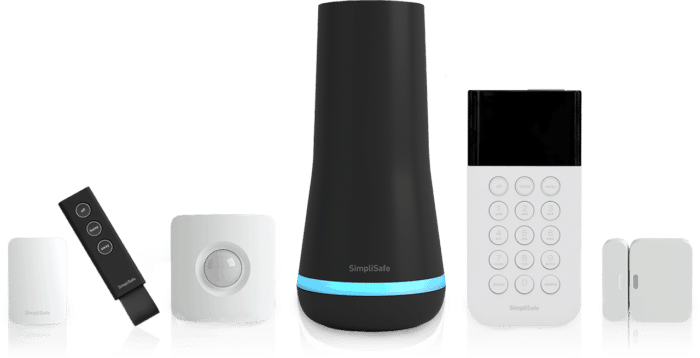
Best AppBest Equipment Range
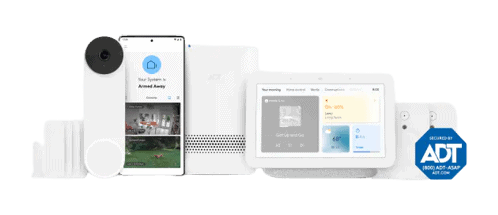
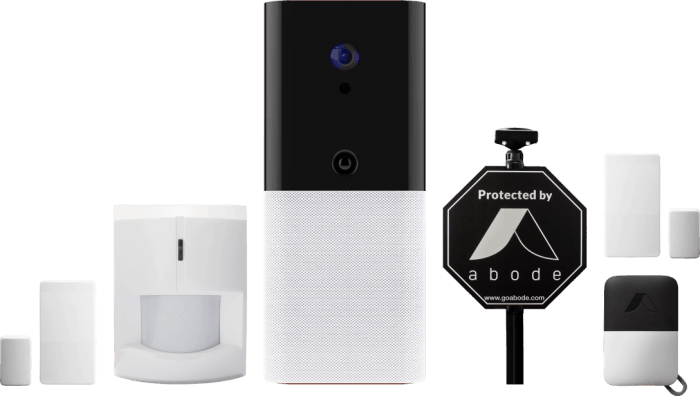
We want to start off by saying that we always recommend 24/7 professional monitoring, which requires a monthly fee. You never know when you’re going to be too busy to answer an alert yourself. With professional monitoring, that’s not a problem.
That said, a security system without professional monitoring is still better than no security system at all. And thankfully, there are plenty to choose from that don’t require any monthly fees at all. After testing over a dozen security systems with no monthly fee, we recommend SimpliSafe, ADT Self Setup, abode, Ring Alarm, and Arlo the best. We’ll dig into the details of our experience with each so you can pick the best option for you. Let’s get started.
>> Check Out: Home Security System Guide
From Anthony Travaglia, Retired Police Officer, Home Security Expert
There are two essential components to any trustworthy home security system review. First, you have to actually test systems yourself. We know it seems obvious, but you might be surprised at how many people claim to know what they’re talking about when they don’t.
Second, and just as important, you have to spend your own money purchasing the systems you review. Let a company send you a system for free, and you never can tell when they may want you to say something nice about them. It sort of undercuts the objectivity of the reviewer.
We purchase systems with our own money, and we review them ourselves, from apps to door sensors to cameras to smoke detectors. We can give you an honest evaluation of these systems because we’ve lived with them, we’ve put them to the test, and we’re beholden to one.
It’s important to compare apples to apples. So we make sure to install all of our test units in the same environment – in this case, a two-story, 2,200-square-foot home owned by one of our security experts. We believe that testing security systems in a real home yields the most accurate results.
We also try to buy the same components from each brand we’re testing (cameras, sensors, etc.) and set those up in the same locations. You can see below where we typically install each piece of equipment we buy:
We also used our industry expertise to decide which features are most important to no-monthly-fee security systems. These features and factors should be top-priority:
We compared our top picks based on those criteria, and here’s our verdict.
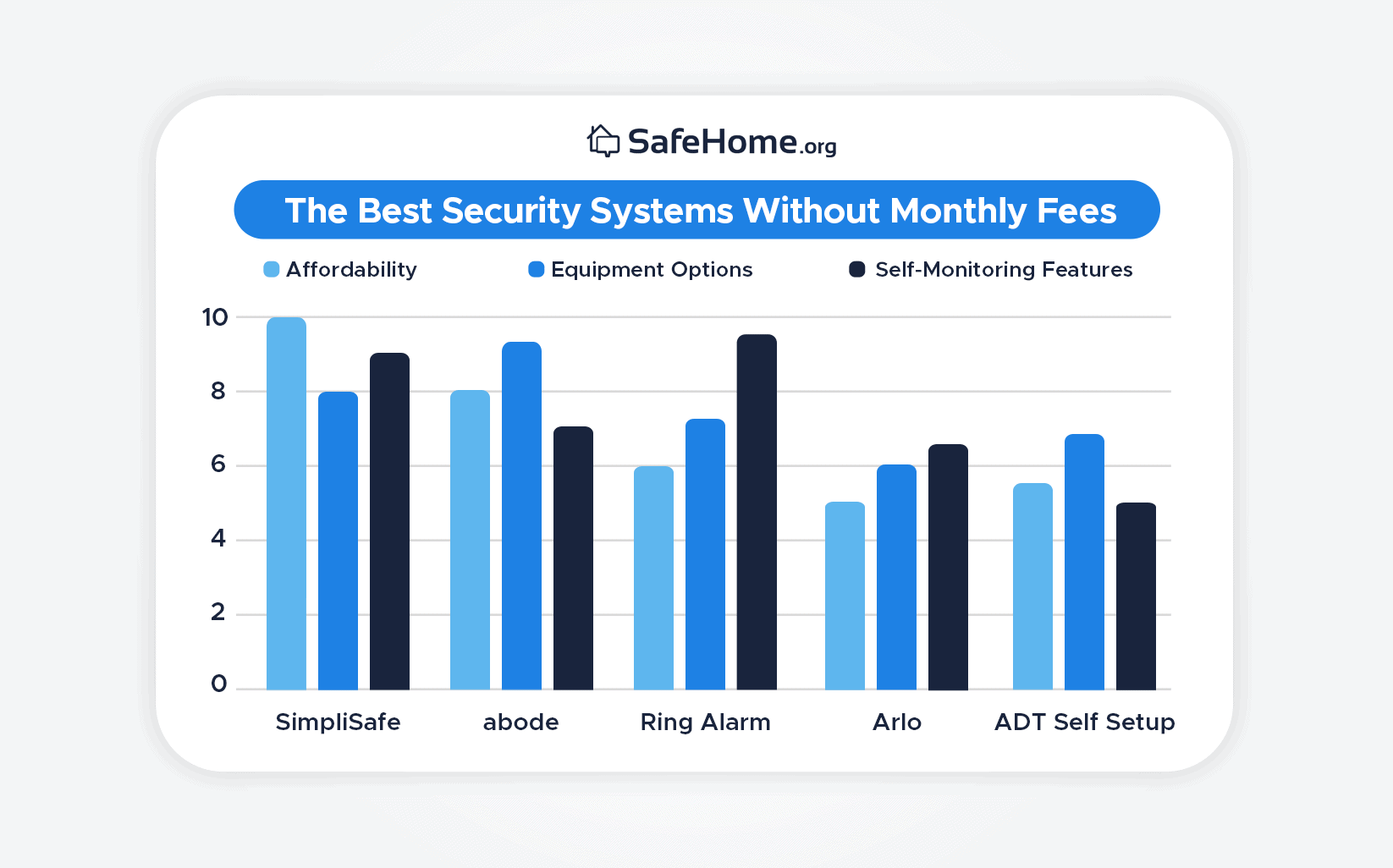
Ranking the Best Security Systems Without Monthly Fees
We are a team of home security and safety experts. Unlike most other review sites, we spend all our time testing and reviewing security and safety-related products only – you won’t find smartphone and mattress reviews on our website. Safety and security are on our minds 24/7. Our security experts include:
Combined, we are the most experienced home security team on the internet, hands down. We started SafeHome.org back in 2016, and since then our work has been featured in The New York Times, The Washington Post, CNBC, and other major outlets. Collectively, we have:
Rest assured, our recommendations are always based on hands-on product experience and a deep knowledge of the home security industry and the brands we cover. So keep reading to find the best no monthly fee security system for your home and budget.

SimpliSafe is one of the best home security systems thanks to its advanced monitoring features, but it also offers some great self-monitoring tools included in a free plan. We got real-time alerts and 24/7 access to live video footage. In addition, SimpliSafe’s paid plans are contract-free. Once in a while, you might need a month or two of professional monitoring. Vacation, right? With SimpliSafe, you can switch between paid and free plans based on your changing needs.
Obviously, SimpliSafe lets you save money with no-monthly-fee monitoring. You can also save on equipment. An entry-level Foundation system lists for just $250, and SimpliSafe’s top-of-the-line package, the Beacon, is only $730. Turns out, though, that SimpliSafe never actually charges its list prices. It’s always running a sale, sometimes up to 60 percent off. Do the math and you’ll discover that SimpliSafe is frequently one of the cheapest systems on this list.
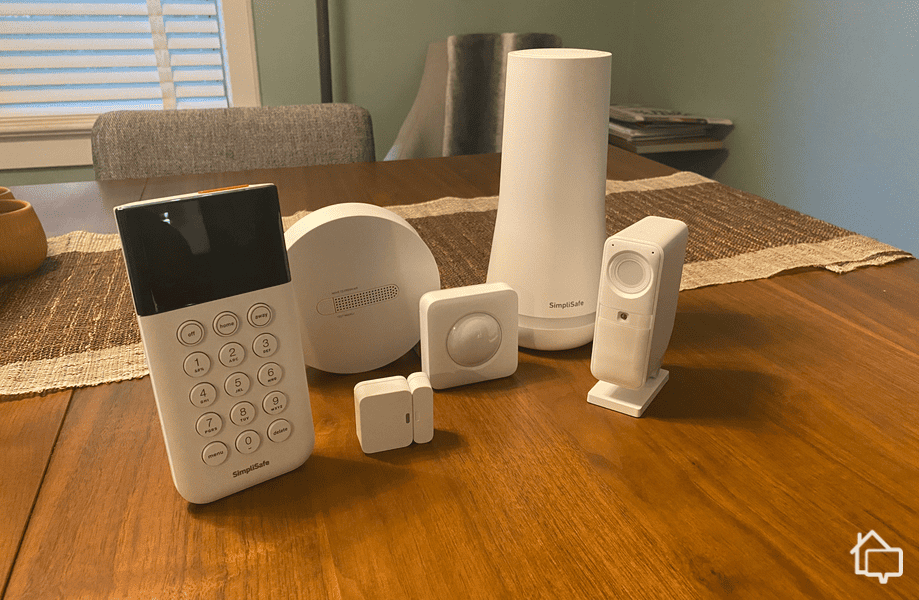
SimpliSafe equipment
SimpliSafe’s camera line includes an outdoor camera that is one of the best-equipped outdoor cameras on the market, with HD video, night vision, 10x zoom, and available Active Guard protection. Add a wireless indoor camera with two-way audio and a video doorbell with smart sensors and no one is getting by your perimeter.
Of course, three cameras isn’t a lot of options, particularly when you compare it to the dozens of different models Lorex offers. If all of those cameras are top-notch quality with industry-leading features, though, maybe you don’t need a lot of choices.
Did You Know? SimpliSafe’s cameras do not support local storage for recordings. That means if you want to record videos, you’ll need to subscribe to their $9.99 per month self-monitoring plan. This provides 30 days of storage for unlimited clips from up to 10 cameras.
No monthly fees always means self-monitoring your system. SimpliSafe’s no monthly fee plan includes instant alerts, live streamed camera footage, and access to the app. We tried it out, and without video recording, we had to check camera livestreams immediately after receiving an alert. At least we could arm our system from afar with the app, though.
Recording videos requires SimpliSafe’s $9.99 per month cloud storage plan that supports up to 10 cameras. They also offer affordable monitoring plans starting at $21.99 per month, which we recommend but understand if it’s outside of your budget. Since SimpliSafe never requires contracts, you can always opt into monitoring at a later date.
FYI: It’s easy to switch SimpliSafe monitoring plans. We went on vacation in the middle of testing the system and didn’t feel like dealing with alerts while we were lounging at the swim-up bar. So we tried the Fast Protect plan for a month. When we got back relaxed and refreshed, we switched back to the free self-monitoring plan.
SimpliSafe systems give you maximum control over your home security. First, you get a choice between eight packages, more than any other on this list. Installation is completely DIY, but you can opt for professional installation. You can even move the system to a different house if you move.
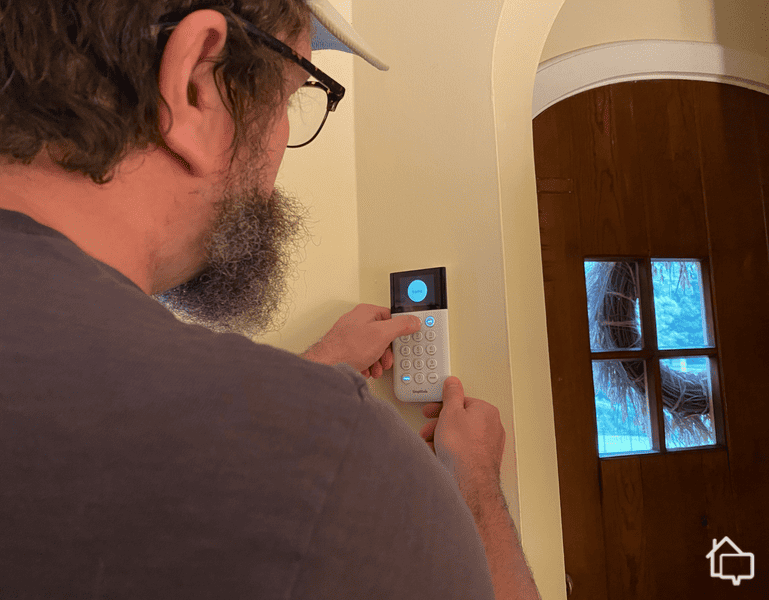
Testing out SimpliSafe’s keypad.
Simplisafe gave us control over our monitoring, too. Since we were putting this list together, we went with true DIY self-monitoring. No monthly fees, but we were still in charge of our entire system. We got real-time alerts when the outdoor camera noticed someone lurking on our lawn and pulled up live footage from our Wireless Indoor Camera. Turns out it was just a neighborhood kid whose bike had gotten a little off course, but at least we knew what was happening.
The nice thing about SimpliSafe is that the company lets you add monitoring features if you need them. Heading out of town for a business trip? For $30 per month, you can have your home professionally monitored, and since there are no long-term contracts, you can cancel it once you get back home.
But SimpliSafe is by no means perfect. On our SimpliSafe wish list are free video storage options. If we could save video to a local storage device or to the cloud, we’d truly have control over our system, even without having to pay monthly fees. For now, video storage requires a fee. Although $10 per month for five cameras worth of recordings isn’t outrageous, free is always better.
>> Compare: SimpliSafe vs. ADT
| Monitoring options | Professional and DIY |
|---|---|
| Installation | Professional and DIY |
| Smart platform integration | Alexa and Google Home |
| Equipment cost | Packages starting at $250.96 |
| Monthly monitoring cost | From $21.99 |
| Contract length | Monthly |

ADT Self Setup is the company’s DIY, contract-free alternative with optional professional monitoring. The good news is that ADT Self Setup includes access to the same high-quality equipment and ADT+ app. It’s the easiest way to manage your ADT system. Without professional monitoring, you won’t get access to some of ADT’s most advanced features like Trusted Neighbor, but you can set up custom alerts and access live video footage anytime.
Like SimpliSafe, ADT Self Setup offers a self-monitoring plan, but its equipment is more expensive. However, ADT’s devices are generally more advanced, especially the Google Nest security cameras. If you want to save some money, we recommend waiting for an ADT sale. We’ve seen discounts of up to 50 percent off. They even throw in a free Nest Cam every now and then.
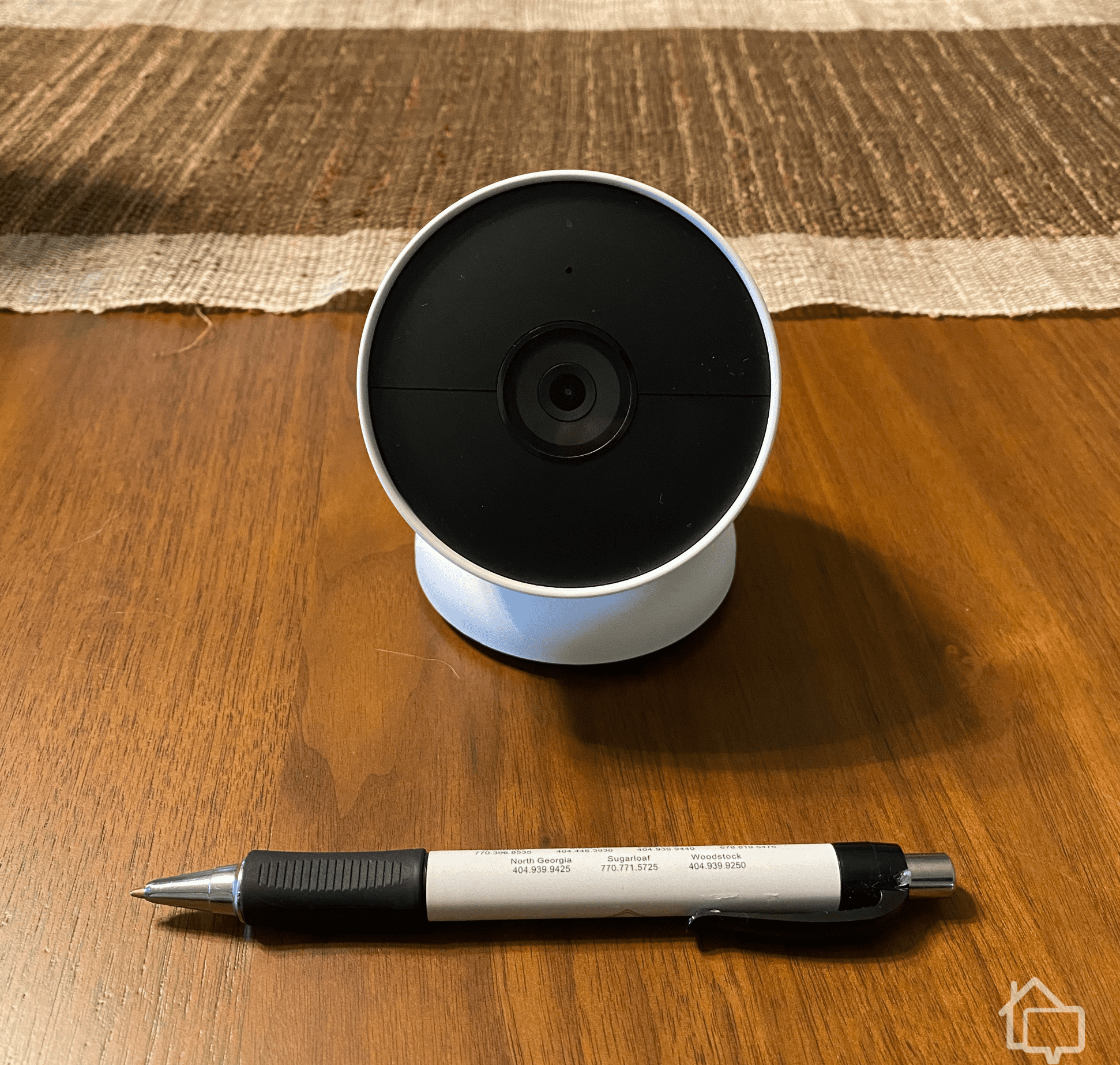
ADT offers wired and wireless Nest Cams, but some of the features require a professional monitoring subscription.
When we compared SimpliSafe to ADT, we found that ADT has a broader range of equipment. ADT offers a choice between wired or wireless cameras and allows you to include multiple hazard monitors in your system.
One of the main differences is that we could set up home automation rules with ADT. We created timers for smart locks and thermostats. The cameras also have facial recognition, which provides personalized alerts when familiar faces are at the door.
FYI: Home automation and facial recognition features are only available with an ADT professional monitoring subscription. They are available in the ADT+ app, and you can access them by switching monitoring plans.
ADT only offers one self-monitoring plan. It doesn’t include a lot of features, but it’s free. You can access your camera feed, set up custom alerts, and use the ADT+ app. There’s no option to review video recordings, so if your alarm is triggered, you’ll need to access the live feed immediately to see what’s happening. Unlike ADT professionally installed systems, there are no contracts, so you can switch monitoring plans anytime you need more coverage.
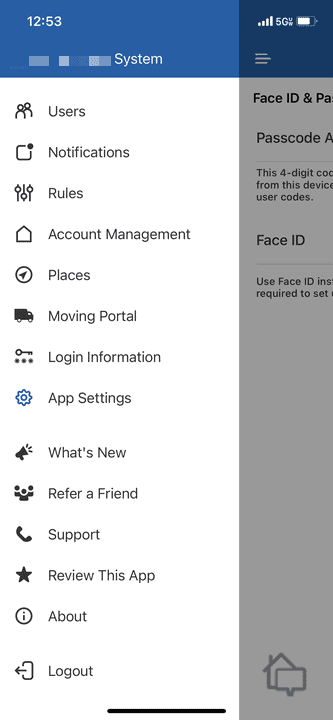
We could access the ADT+ with our self-monitoring plan, but not all the features were available.
Our ADT Self Setup experience wasn’t significantly different from that of the professionally installed systems. The equipment is identical, but we just had to set it up ourselves. We had some help from the ADT website, which includes guides and videos on how to install the devices correctly. Most of them stick or mount to surfaces, so it wasn’t too difficult. We had the option to schedule a video call with a technician if we got stuck.
Managing our system with ADT+ was also easy. During our ADT Self Setup testing, we simulated alarms to see how quickly the system responds. We received an instant notification every time the system was triggered. The notification took us directly to the app, and we could bring up video feeds from the home page. This is handy during the day, but it is harder to manage when you’re at work, on vacation, or sleeping. It’s why we often recommend signing up for ADT professional monitoring plans instead.
| Monitoring options | Professional or DIY |
|---|---|
| Installation | DIY |
| Smart platform integration | Alexa and Google Home |
| Equipment cost | Packages starting at $269 |
| Monthly monitoring cost | From $24.99 |
| Contract length | Monthly |

Abode offers some of the most affordable equipment packages, but don’t let the price fool you. This isn’t some cut-rate security system; you can get high-tech features that rival full-service companies like Vivint. And you get most of those features even if you choose to self-monitor. That means full integration with Alexa, Google Home, and even Apple HomeKit. You can unlock even more features with a professional monitoring plan, but abode offers plenty for a system with no monthly fees.
You can buy a basic abode system for just $159, and even the company’s most expensive package is just $380. These sound like sale prices, especially when you compare them to ADT packages that range from $269 to more than $1,500. That makes abode one of the lower-priced security systems on the market.
You can save even more money on monitoring. If you’re willing to do the job yourself, you can self-monitor for no money whatsoever. Just purchase your adobe equipment and you’re done, or you can add cloud storage for $6.99 per month. That’s three dollars cheaper than what both Ring and SimpliSafe charge, and it covers an unlimited number of cameras.
Typically, we recommend signing up for a professional monitoring plan since you never know when you may be too busy to check your camera feeds yourself. Abode has you covered there, too, for $25.99 per month. That’s cheaper than SimpliSafe’s $31.99-per-month Core plan for systems with security cameras, but note that abode doesn’t offer video verification like SimpliSafe does.
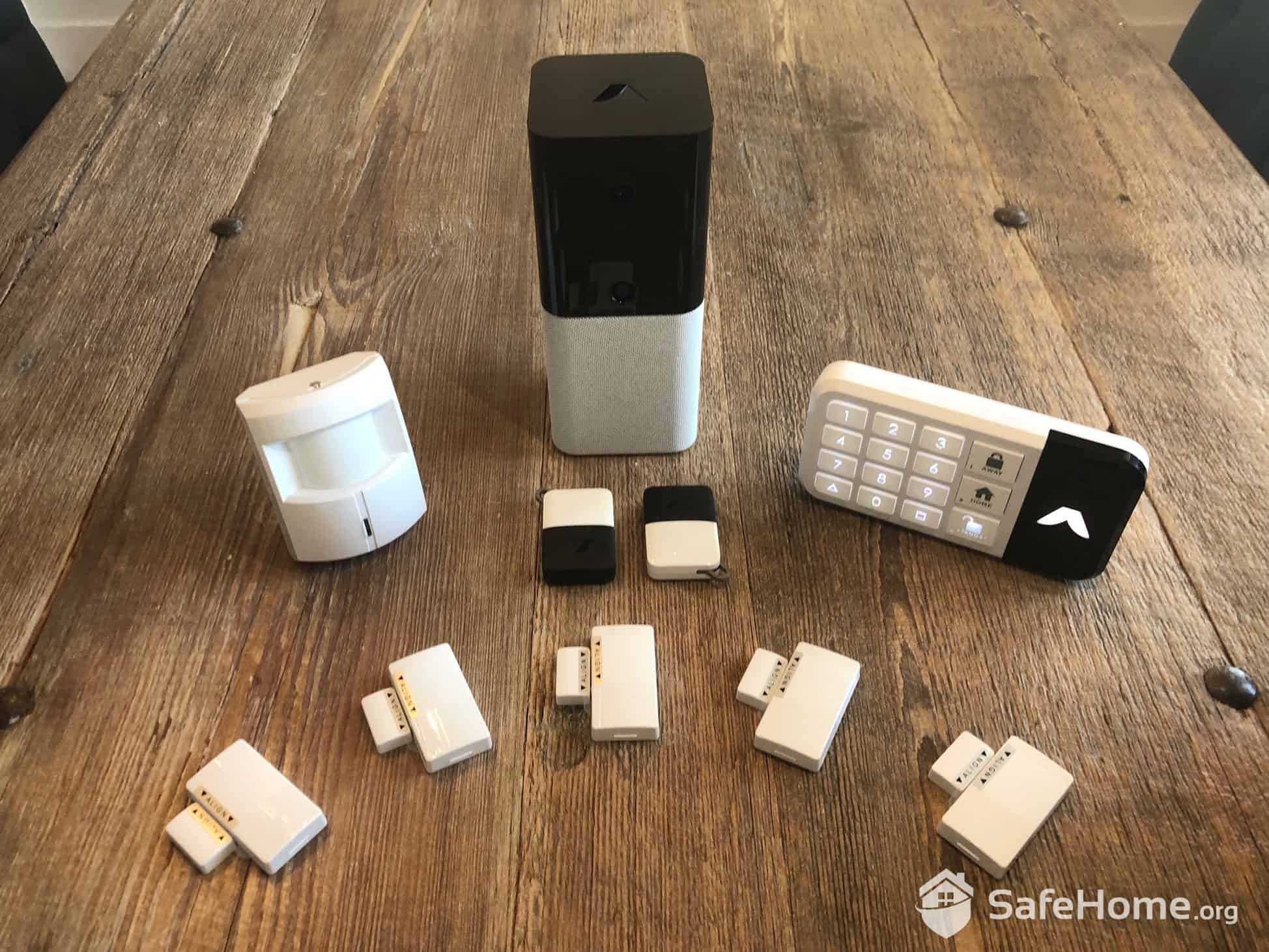
abode Equipment
Abode takes a unique approach to home security equipment packages. Most companies offer a single line of equipment. You pay more depending on how many devices you order. The equipment itself, though, is the same no matter how much you spend. Not so with abode. The company offers three lines of equipment. If you order abode’s best package, the Iota, you don’t just get more equipment. You get better equipment. The Iota includes a hub with a built-in HD camera and support for Z-wave technology.
Abode offers just one camera, which has to do double-duty as both an indoor and outdoor device. However, the abode camera is rated IP65 so it can withstand the elements no matter where you decide to install it. There’s also a wireless video doorbell, which abode sells for under $100. Of course, as with all of abode’s other equipment, both these devices are fully compatible with smart home ecosystems like Alexa and Google Home as well as thousands of other smart home devices.
Pro Tip: Our favorite abode feature is the CUE automation platform. We’ve accumulated our share of smart devices over the years, so we connected them via the abode app. We don’t even turn off the lights when we go to bed anymore. WE set up a rule to do it for us.
Abode’s commitment to affordable home security extends to its no-monthly-fee self-monitoring option. You pay no money, but you still get all the tools you need to monitor your security, from real-time alerts to live video footage through the abode app.
While abode’s free self-monitoring option is fairly comprehensive, we still recommend a subscription for cloud storage and professional monitoring when you can afford it. That’s why we like abode’s no commitment approach allowing you to switch to a paid plan anytime you want, even if it’s just for a month.
>> Compare: abode vs. SimpliSafe
You just aren’t going to find any self-monitored, no-monthly-fee systems that offer the kinds of smart features abode does. The truth is that abode offers a lot of the same smart home integrations you’ll only get with more expensive systems like ADT and Vivint. Heck, those two don’t work with Apple HomeKit like abode does. And with Z-Wave technology, you can connect to literally thousands of smart home products or take advantage of IFTTT functionality.
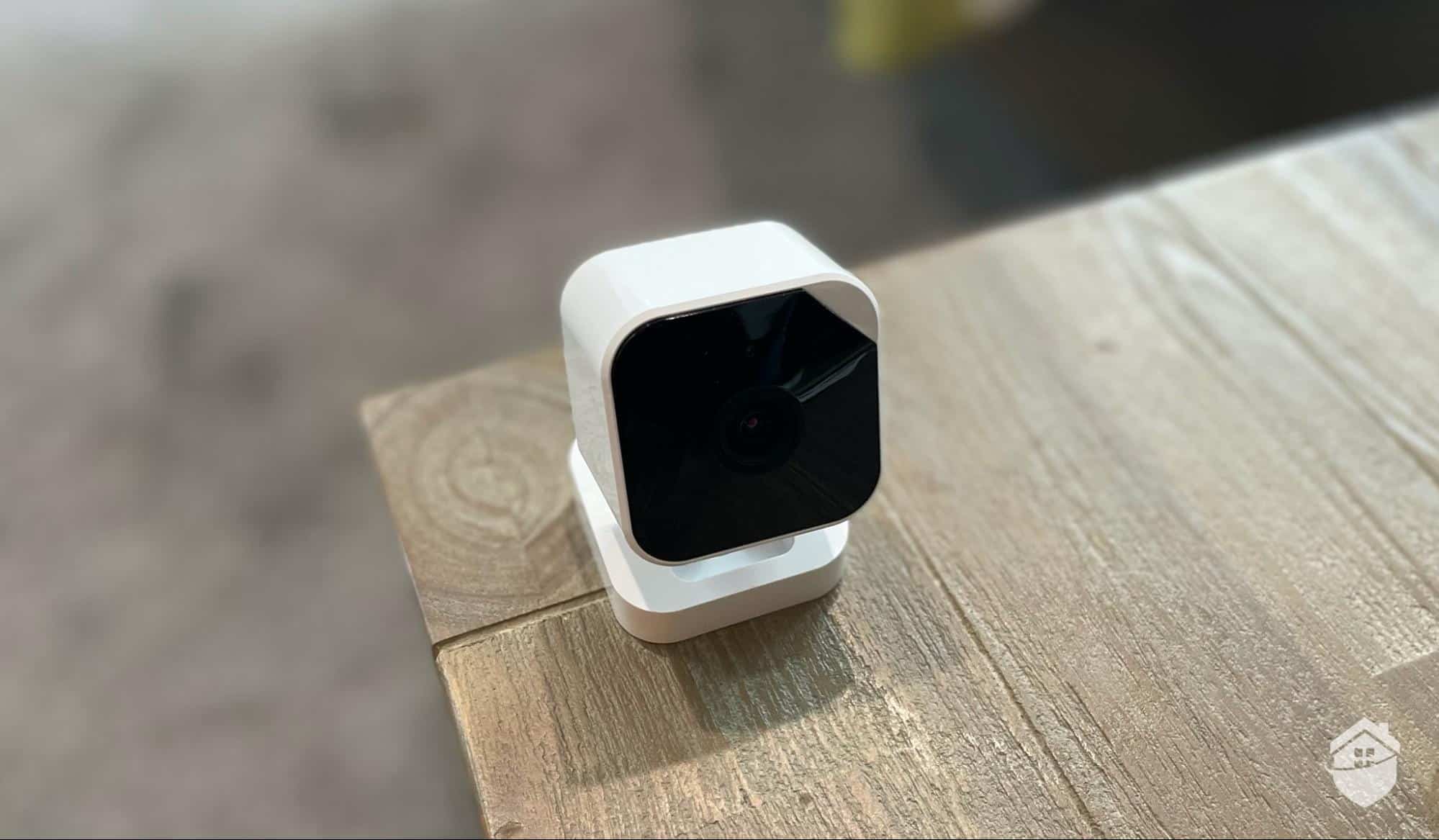
Abode Cam 2
We connected our abode app to our cell phone’s morning alarm system so motion detection shut off when we got up in the morning. Just for good measure, we also connected the toaster. We put a couple of bagels in before bed, and they were ready for cream cheese by the time we got out of the shower.
>> More Options: Best Security Systems for Apple
Some of the best smart functions require you to pay for abode’s Standard plan. They offer their full smart home integrations, but their CUE home automation system requires a subscription. That’s still better than most, which is why you’ll find abode on our list of the best self-monitored systems
How many times do we need to say it? No system is perfect, and abode does have its downsides. You get far more home automation features with abode than you get with, say, SimpliSafe. But abode doesn’t offer the same level of customer support as SimpliSafe. You don’t get access to live support at all unless you sign up for a monthly paid plan. And you may need that support. abode’s DIY installation isn’t quite as intuitive as SimpliSafe’s.
Pro Tip: The abode hub we tested (iota All-in-One) sounds like a dial-up modem with the amount of beeps it makes. We suggest jumping into your system settings and selecting mute all sounds. You can thank us later.
| Monitoring Options | Professional and DIY |
|---|---|
| Installation | DIY |
| Smart Platform Integration | Alexa, Google Home, and Apple HomeKit |
| Equipment Cost | From $159.99 |
| Monthly Monitoring Cost | From $16.58 |
| Contract Length | Monthly |


In contrast to Abode and Simplisafe, you don’t even have to buy a complete Ring security system. You can grab a single spotlight cam or one of its video doorbells, and never have to buy another piece of equipment. As for monitoring, you can go full-on self-monitoring for free, or add cloud storage for as little as $4.99 per month.
We like that Ring lets you set up your home security in ways that will suit your budget. They have options all the way from a standalone Indoor Camera that costs $60 up to premium packages for about $1,000.
Ring’s actual home security systems called Ring Alarm start at $199.99 and go up to about $600. If you ever want Ring’s professional monitoring service, you’ll need a Ring Alarm system. Of course, you can always start with a standalone camera or two and then add a Ring Alarm system at a later date.
Pro Tip: Ring is owned by Amazon, so we managed to grab a bargain when the system was on special during the Prime Day sales. But keep your eye on their website as they have discounts and bonuses running all the time.
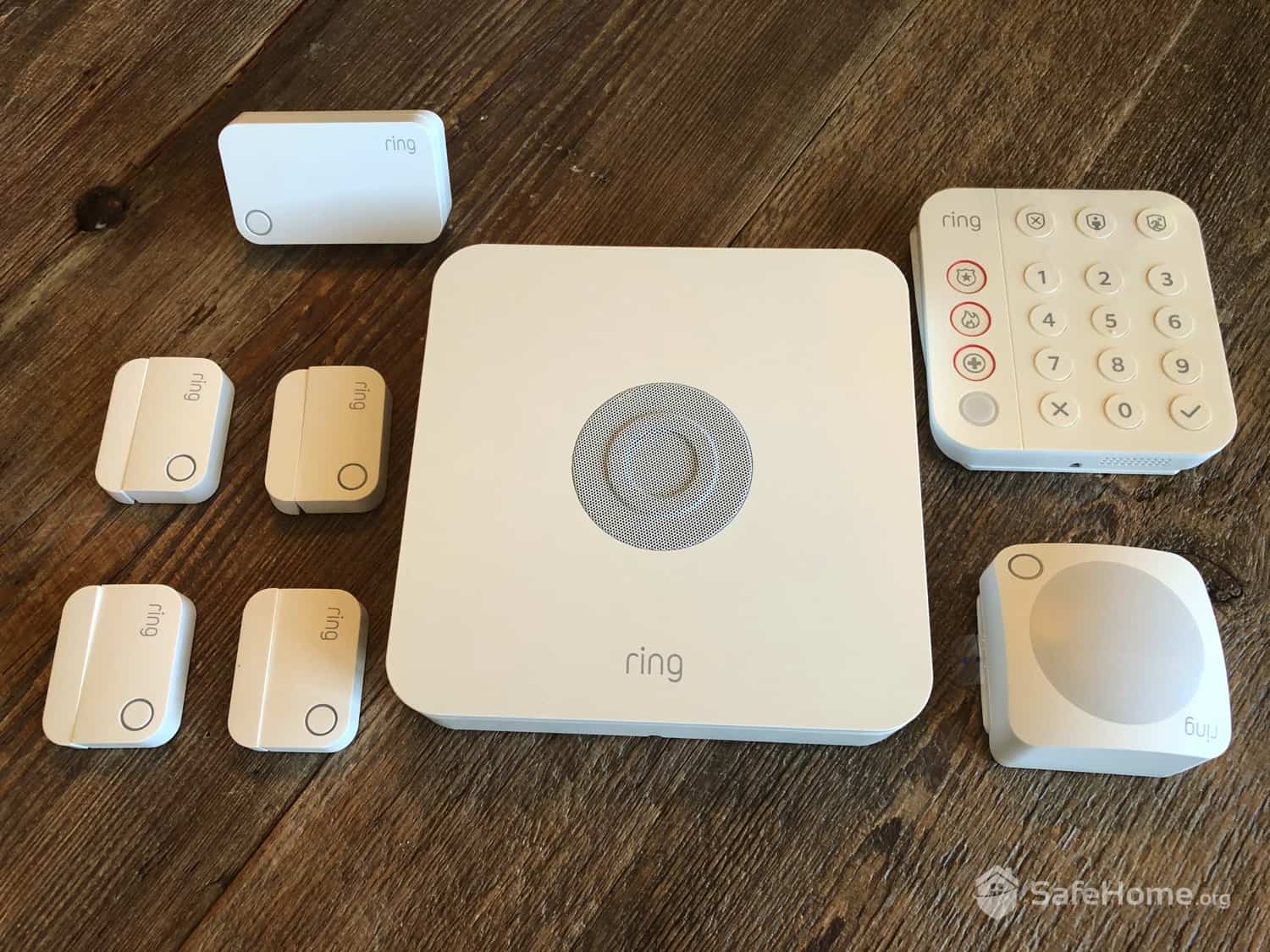
Ring Alarm (2nd Gen) Equipment
Ring’s real strength is its cameras. After all, this is a company that made its name by inventing the doorbell camera. The company offers a large selection, with models that come with unique features and functions. If you’re looking for a great indoor camera, for instance, you might dig further into our complete Ring Indoor Cam review. As we note there, this is a camera you can set up and forget about.
FYI: We watched videos on how to set up the equipment in the Ring app. They went for about two minutes each and took us through each step in the setup process.
If you’re looking for outdoor cameras, you’ll find even more options from Ring. There are models with two-way audio, models with floodlights and spotlights, wired models and wireless models. You can even get solar panels and save time and money dealing with batteries. Everything is rated to withstand the elements including rain, shine, and even blizzards. As we note in our full Ring camera review, whatever your security needs, there’s probably a Ring camera for you.
And while Ring may not be known for its other home security equipment – entry sensors, glass break monitors, and smoke detectors – the company offers everything you could need to set up a complete home security system. You can even purchase front door locks and smart thermostats.
Ring is another of those systems that gives you monitoring options. You can self-monitor for free, of course. Otherwise, why would Ring be on this page, right? And, of course, self-monitoring is entirely free if you forego cloud storage. Even for free, you get real-time notifications any time motion triggers a detector or someone opens a door, and you can pull up live footage any time. In fact, we connected Ring to Alexa so we were able to pull up video with just our voice.
Cloud storage costs extra – $5 a month covers one camera, while $10 covers an unlimited number of devices. And, like both SimpliSafe and abode, Ring offers a professional monitoring plan, but as an add-on to cloud plans. Monitoring costs $10 per month, which, added to the cloud plan, totals to only $20 per month.
Ring began life as the Ring Video Doorbell company. It didn’t sell entry sensors, smoke detectors, or offer professional monitoring. It didn’t even sell other cameras. Nowadays, Ring offers all of those things and more. They didn’t abandon that earlier approach and still offer free self-monitoring.
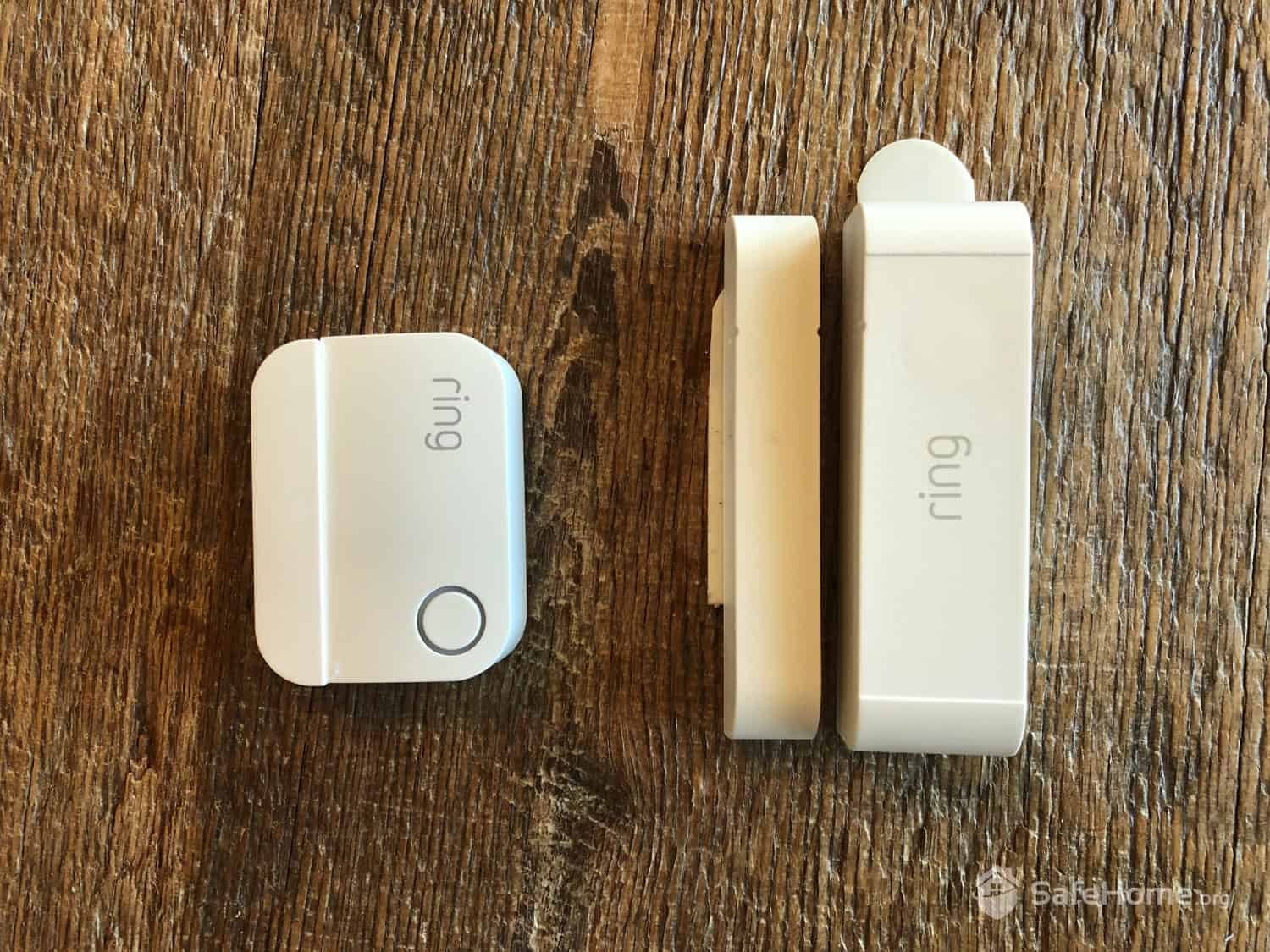
Ring Alarm sensors
The Ring app makes it easy to self-monitor. During our tests, we had complete control over all the system’s most important features through the intuitive app. When the neighborhood Girl Scouts were out selling cookies, our Ring doorbell let us know the moment they stepped on our front porch. Two-way audio let us order our Thin Mints, and they never even knew we were out to lunch with friends the whole time.
We sometimes think Ring is a little too DIY-centered. This is not a company that’s going to help you out if you’re having trouble deciding what equipment you need. Installation is mostly DIY as well. Ring will track down a local installer if you really need one, but you can do it easily yourself. And customer service is a bit … corporate. If you want no monthly fees, though, you’re probably a do-it-yourselfer anyway, so all of that may be right up your alley.
| Monitoring Options | 24/7 professional and DIY |
|---|---|
| Installation | DIY |
| Smart Platform Integration | Alexa |
| Equipment Cost | From $244.95 |
| Monthly Monitoring Cost | $4.99 |
| Contract Length | 1-12 months |


Arlo has expanded and now offers complete home security equipment packages and monitoring plans. On top of that, it still makes some of the most advanced cameras on the market, like the Arlo Go that works without Wi-Fi. You can also still self-monitor your Arlo system with no monthly fees.
Even though Arlo offers a full security system, it’s not their main product. They still focus most of their efforts on their security cameras. And that shows all the way down to their pricing. The security system starts at $200, right in line with most providers, whereas their cameras start at just $40. That’s $20 less than Ring’s cheapest camera, but the same price as their security system.
Pro Tip: If you’re going to buy Arlo’s cameras, make sure you have a good internet connection. 2K and 4K cameras need reliable Wi-Fi. Otherwise, you might be reviewing pixelated footage.
By this point, you know the drill – self-monitoring with Arlo is free. Cloud storage is $10 a month for one camera, $20 a month for unlimited cameras. That’s a bit steep compared to Ring, but you get a number of extra features for that price, including package detection and person recognition. We found audio detection to be the most useful of these. We knew the neighbor’s dog was on our porch, even though he wasn’t in front of the camera, by the click of his paws. Professional monitoring? That’s $29.99 a month.
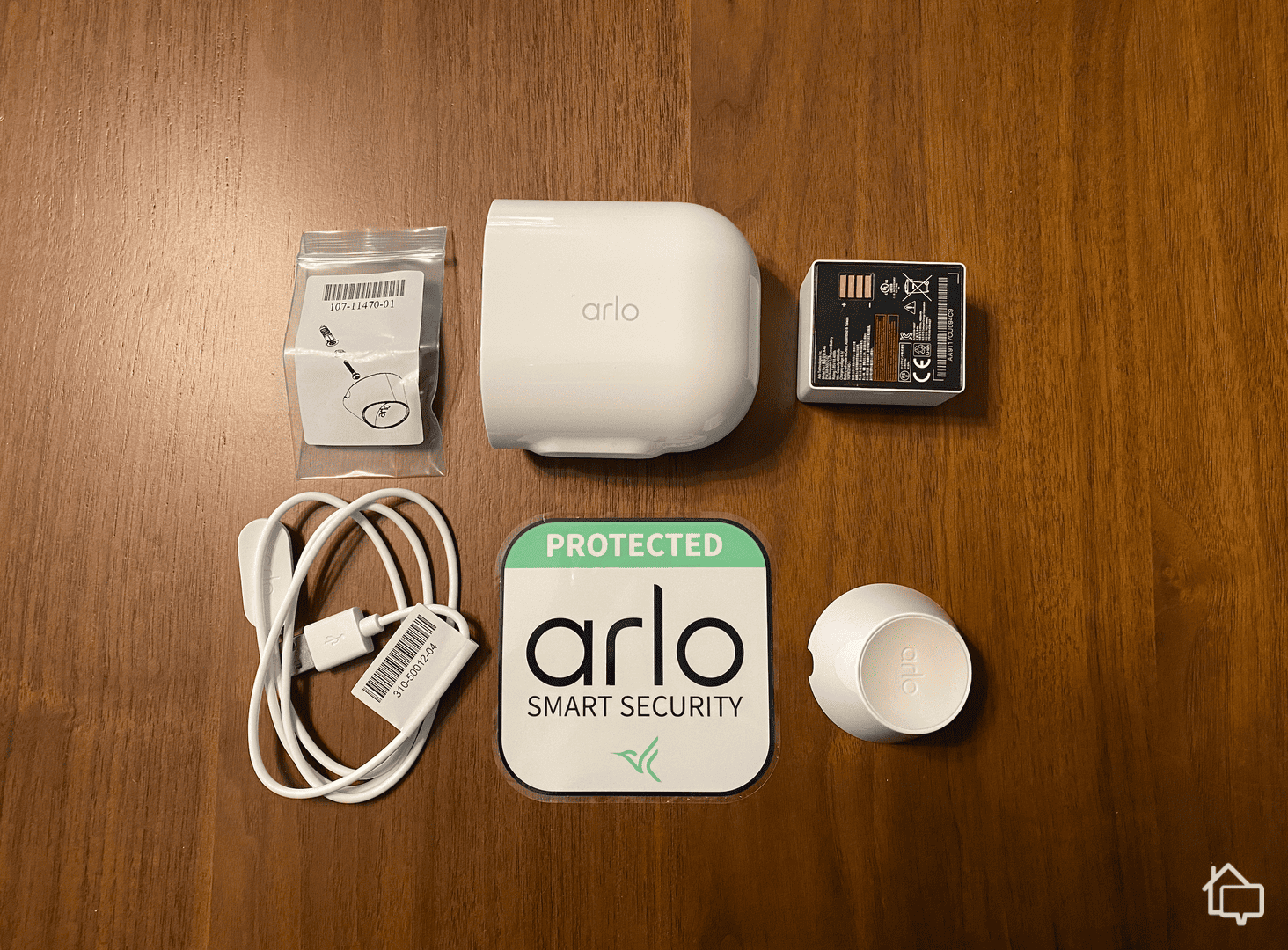
Arlo Pro 4: What’s in the box?
When Arlo decided to offer security systems, it took an innovative approach. Arlo sells only one sensor capable of performing eight different functions. It’s a motion detector, a smoke detector, an entry sensor, and five other things. That sounds nice, but in reality, you can’t use all functions at once. You don’t need a water leak sensor stuck to your front door. That’s why we primarily recommend Arlo for their security cameras.
All of Arlo’s equipment connects to the mobile app where you can check alerts and live footage for free. Cloud storage costs start at $8 per month for one camera or $18 per month for unlimited cameras. That unlocks Arlo’s smart features too. They also offer professional monitoring with cloud storage for $25 per month, but it requires an Arlo security system, not just cameras.
Arlo has always made great cameras at affordable prices. Even the $40 wired indoor camera comes with a 130-degree field of view, and some cameras max out at 180 degrees. We installed an Arlo Ultra with 4K resolution and were astounded. We could make out the return address label on the package that was delivered while we were at work. Turns out, it was a box with dog toys. Because of Arlo, we were able to text our neighbor from work and let them know their dog toys arrived. We’re sure Fido was pleased.
We’ll confess, we were a little skeptical of Arlo’s multi-purpose sensors. One sensor to handle eight different functions? Turns out, they do just that. You have to designate what exactly you want a particular sensor to do, and you can’t use one sensor to do multiple jobs at the same time. Our motion sensor couldn’t detect flooding water. We had to set up another sensor for that. Still, pretty impressive, and a nice aesthetic approach as well, since every sensor in our system matched perfectly with the others.
FYI: We make sure anyone approaching our home can see our security cameras, even at night. The Alarm Industry Research and Education Foundation revealed that 60 percent of convicted burglars said the presence of a security system would cause them to seek another target.1
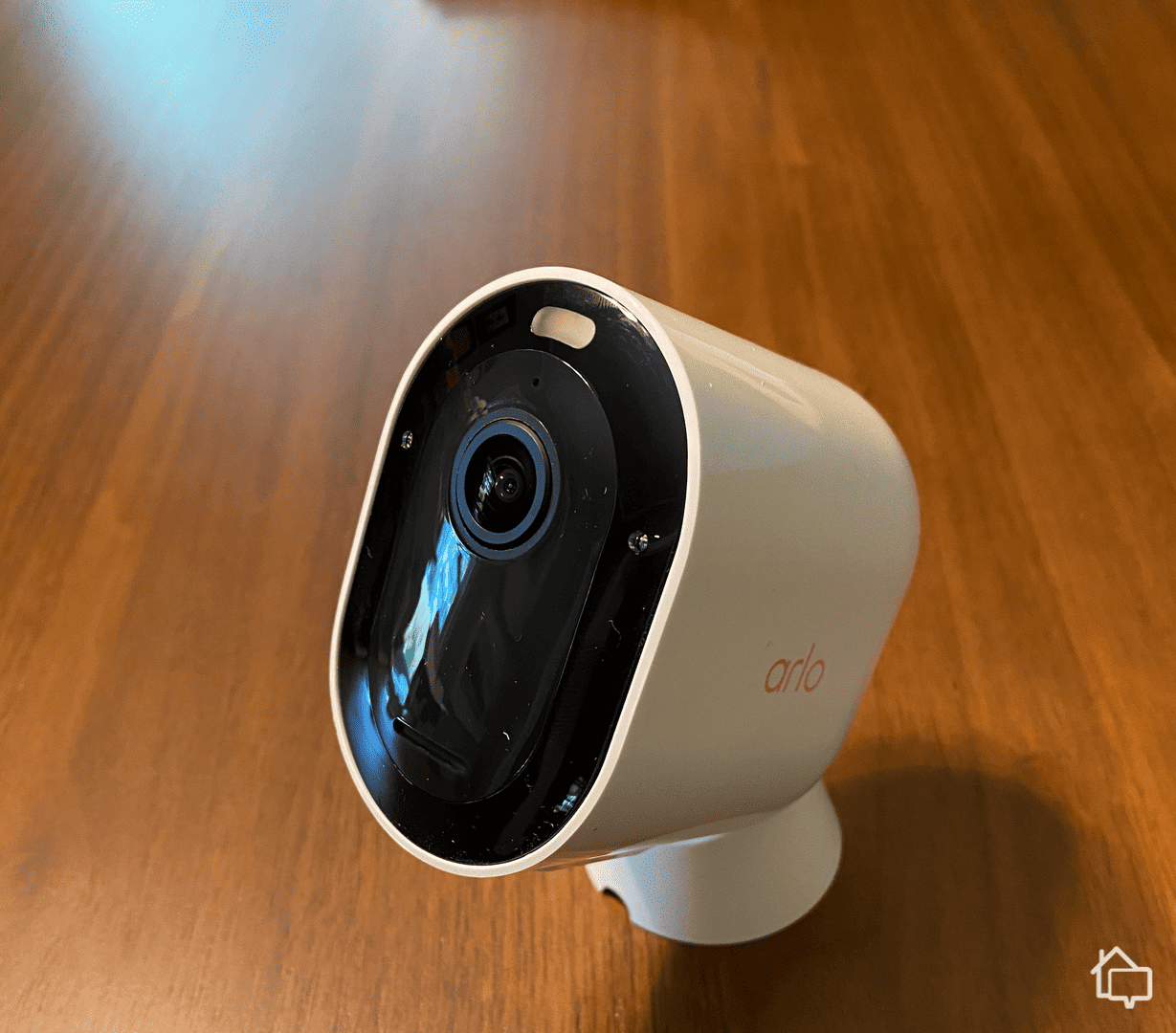
The Arlo Pro 4
You should know that you’ll give up some Arlo features if you decide to self-monitor your system. Only paid plans include person detection, for instance. Google Home and Alexa integration? You’ve got to sign up and pay a monthly fee.
Not paying monthly fees has a lot of advantages, but you have to do all your own monitoring and you don’t usually get a lot of extra tools to help you do that. In the end, that old adage turns out to be true more often than not: you get what you pay for.
>> Compare: Arlo vs. Ring
| Connectivity | Wi-fi, Ethernet |
|---|---|
| Power | Wired, battery, PoE |
| Field of View | Up to 180° |
| Resolution | Up to 2160p |
| Storage | Cloud |
| Smart Platform Compatibility | Alexa and Google Home |
You’re into self-monitoring; otherwise, you wouldn’t be reading this. So it makes sense that you might want to do a little home security system research for yourself. Here’s what we might suggest you look for during your search.
Obviously, you want to start by finding systems that offer no-monthly-fee security. Plenty of systems out there require you to sign up for paid professional monitoring — Brinks and Vivint, for instance. You want to avoid those brands.
On the other side of the coin, you want to make sure that eliminating monthly fees won’t compromise your safety. A DIY system should be straightforward for you to operate. It should also have a few minimum features to help you police your own property such as:
Of course, you want all the other aspects of your system to be top tier as well. There’s no reason to have a home security system if it’s not going to do its job. So, as we’ve talked about here, you also want to consider:
If you’re starting to question whether a home security system is worth the money, we suggest reading some studies. Some of the data that surprised us included:
Once you’ve got a list of systems that meet all these criteria, you can start comparing features, like how much home automation a particular system offers and whether or not you get a cool key fob and yard signs when you sign up. The main thing is that you and your family are protected. And, if you’ve looked carefully at price, equipment, monitoring, alerts, video feeds, and system control options, you will be protected.
We’ve mentioned it a couple of times already: If you’re looking for a home security system with no monthly fees, you’re going to need to monitor it yourself. Companies don’t give professional monitoring away for free. Of course, having no monthly fees is going to save you money over the long haul (maybe a lot of money). You’ll have to do the setup and monitoring yourself if you want to keep your home and your family safe. What’s involved?
Finally, keep in mind that you’re on your own when it comes to monitoring your home security; that means you need to get into the habit of checking when alerts come through. That includes nighttime alerts. It also includes all those times when you’re busy getting your teeth cleaned, sitting comfortably in your movie theater seat, or out biking. It can be helpful, in these situations, if you have someone to back you up, someone who can watch for alerts until you can take over again.
From Anthony Travaglia, Retired Police Officer, Home Security Expert
There’s something to be said for no-monthly fee security systems. There’s the saving money bit, and maybe that’s the best part, but there’s also the don’t-have-to-worry-about-your-system bit as well. You don’t have to keep up with bills, or worry about automatic debits when you’re short on cash. And you don’t have to worry about pushy customer service agents trying to upsell you on new products and improvements when they contact you about your bills.
If you’ve learned anything reading through this guide, let it be this. There are affordable systems, and then there are cheap systems. Just because a home security package comes with a low sticker price doesn’t mean it’s going to protect you. For that, you have to do your research. You have to know what you’re getting and you have to think about value rather than just the bottom line. Or, you can trust us to do that for you.
Our five top-rated no-monthly-fee home security systems are SimpliSafe, ADT Self Setup, abode, Ring, and Arlo.
No. Most no-monthly fee security systems don’t offer video recording. Many of these systems offer real-time viewing for free, but most require a monthly fee if you want to add video recording.
No. Security systems without monthly fees don’t usually offer professional monitoring, at least without adding a fee. Many security systems without monthly fees do offer professional monitoring, but they include it as an add-on service that you must pay for. This would be an upgrade from the free self-monitoring option. Prices vary among companies.
Generally, the cost of a no-monthly-fee security system is the cost of the equipment you choose to install. That can vary greatly from one home to another. A single security camera may cost less than $100. Equipment for an entire DIY home security system averages between $250 and $400.
Yes, in many cases, you can, but it depends on the insurance company. Many offer a discount no matter what type of home security system you have. The discount may be higher if you subscribe to a professional monitoring service. Check with your insurance company for guidelines.
Security Magazine. (2013). Study Says Convicted Burglars Confirm Value of Alarms, Other Deterrents.
https://www.securitymagazine.com/articles/84343-study-says-convicted-burglars-confirm-value-of-alarms-other-deterrents
Securiteam. (2024). US Burglary Statistics 2024.
https://securiteam.us/2024/04/23/us-burglary-statistics-2024/
Federal Bureau of Investigation. (2023). FBI Releases 2022 Crime in the Nation Statistics.
https://www.fbi.gov/news/press-releases/fbi-releases-2022-crime-in-the-nation-statistics
ScienceDaily. (2013). Through the eyes of a burglar: Study provides insights on habits and motivations, importance of security.
https://www.sciencedaily.com/releases/2013/05/130516160916.htm